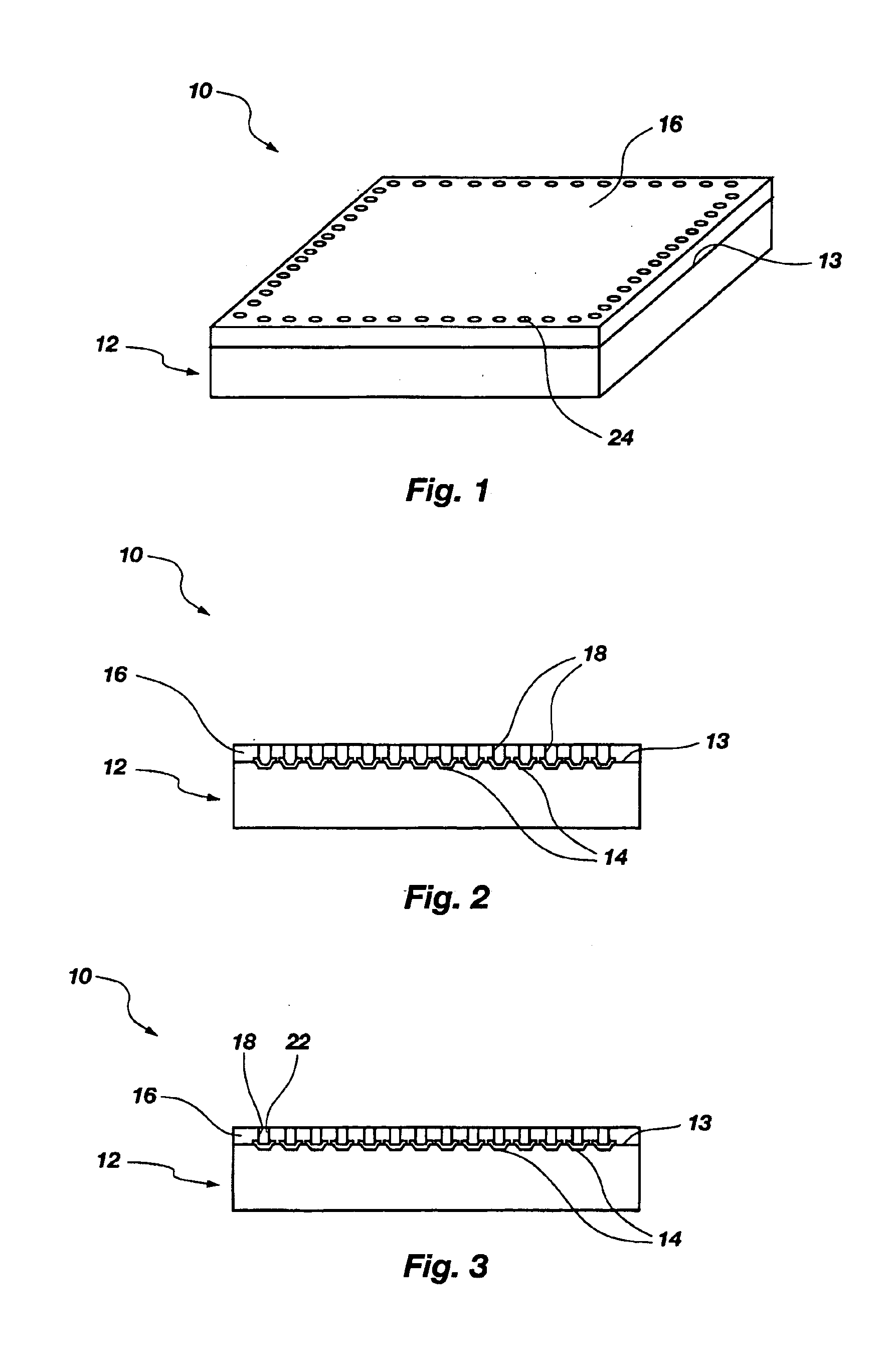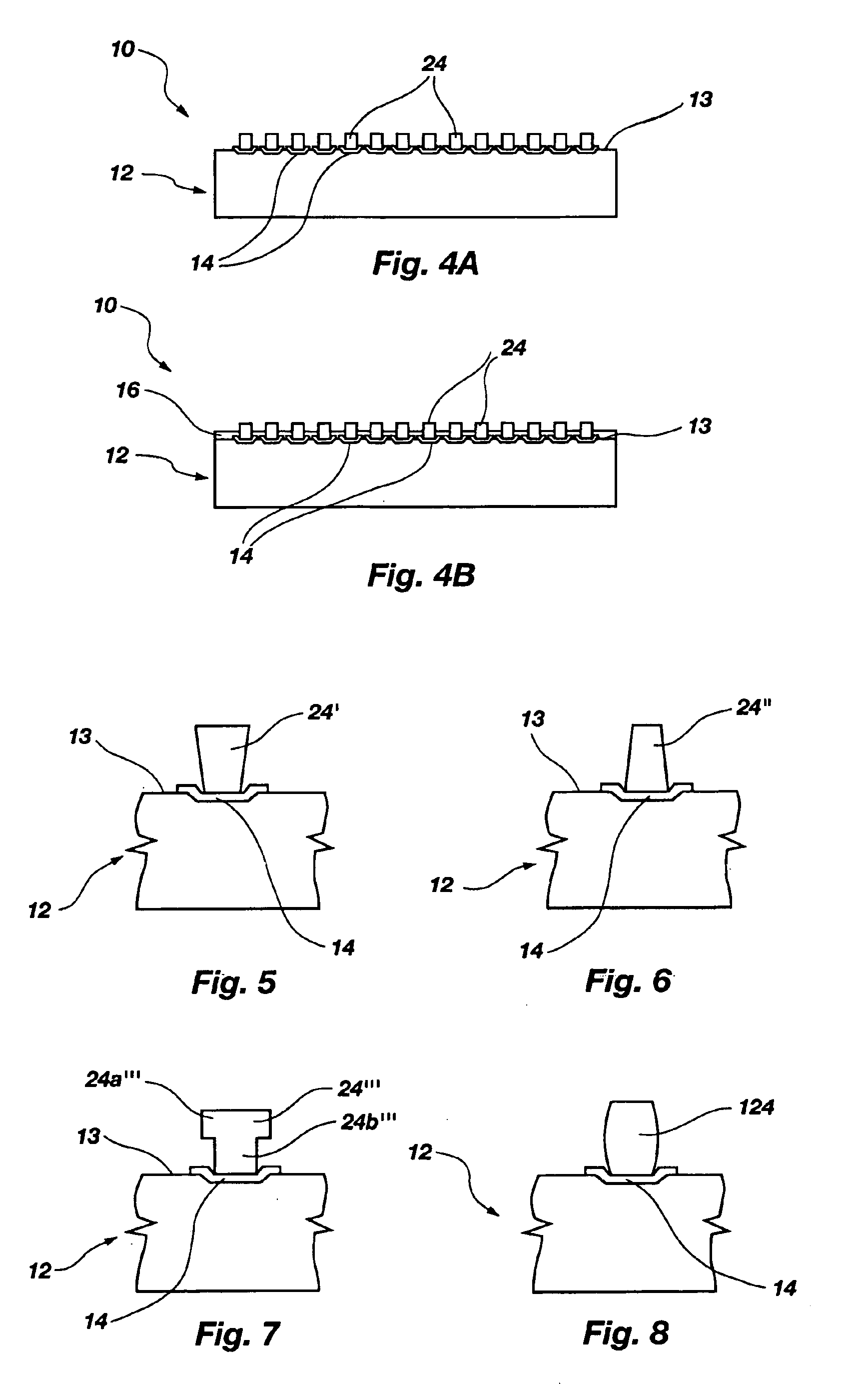Method of disposing conductive bumps onto a semiconductor device
- Summary
- Abstract
- Description
- Claims
- Application Information
AI Technical Summary
Benefits of technology
Problems solved by technology
Method used
Image
Examples
Embodiment Construction
With reference to FIG. 1, a semiconductor device 10 according to the present invention, which includes a substrate 12 with integrated circuitry thereon and contact pads 14 (see FIGS. 2-8) in electrical communication with the integrated circuitry is illustrated. As depicted, substrate 12 is a semiconductor die and contact pads 14 are the bond pads of the semiconductor die. Typically and conventionally, the bond pads, when used with a tin / lead solder, may be coated with a plurality of superimposed metal layers to enhance the bonding of the solder to the metal of the bond pad. Further, contact pads may be offset from the bond pads and connected thereto by circuit traces extending over the active surface so as to rearrange an input / output pattern of bond pads to a pattern more suitable for an array of conductive bumps. Semiconductor device 10 also includes a solder mask 16 comprised of dielectric material disposed over an active surface 13 of substrate 12. Solder mask 16 includes apertu...
PUM
 Login to View More
Login to View More Abstract
Description
Claims
Application Information
 Login to View More
Login to View More - Generate Ideas
- Intellectual Property
- Life Sciences
- Materials
- Tech Scout
- Unparalleled Data Quality
- Higher Quality Content
- 60% Fewer Hallucinations
Browse by: Latest US Patents, China's latest patents, Technical Efficacy Thesaurus, Application Domain, Technology Topic, Popular Technical Reports.
© 2025 PatSnap. All rights reserved.Legal|Privacy policy|Modern Slavery Act Transparency Statement|Sitemap|About US| Contact US: help@patsnap.com



